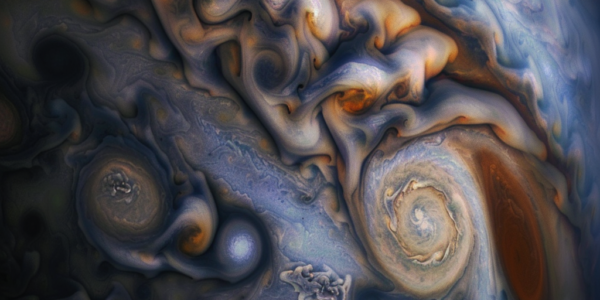The Role of Crustal Carbonate Build-Up in Earth’s Oxygenation
A recent study published in Nature Geoscience sheds light on the role of crustal carbonate build-up as a driver for Earth’s oxygenation, presenting a theoretical framework for the long-term global oxygen, phosphorus, and carbon cycles. The findings reveal that the accumulation of carbonates in the Earth’s crust has a significant impact on the planet’s oxygenation trajectory in both the atmosphere and oceans, providing valuable insights into the complex interplay between geological and biological processes that have shaped Earth’s atmosphere and oceans over billions of years.
China’s Rapid Expansion of Electric Power Grid Leads to Surge in Greenhouse Gas Emissions
China’s rapid expansion of its electric power grid has led to a concerning increase in the release of sulfur hexafluoride (SF6) gas, a greenhouse gas 24,300 times more potent than carbon dioxide (CO2) in creating the greenhouse effect. This surge in SF6 emissions poses a threat to global efforts in combating climate change, as it significantly impacts the planet’s radiative budget. The study emphasized the urgency for immediate action to reduce and ultimately eliminate SF6 emissions, stressing the imperative nature of global cooperation in addressing this pressing environmental issue.
Indian Forests Facing Silent Crisis Due to Climate Change
Indian forests are losing their ability to absorb CO2 due to climate change, posing a threat to India’s climate goals. Research shows an increase in green cover but a decrease in CO2 absorption, emphasizing the urgent need to address the impact of climate change on forests.
The Truth About Greenhouses
The Greenhouse Effect Isn’t for Greenhouses. Greenhouses don’t actually work based on the greenhouse effect. Instead, they create a controlled environment conducive to plant growth by controlling convection. This article explores the science behind greenhouses and the misconceptions surrounding the greenhouse effect.
Surprising Insights About Debris Flows on Mars
New research from planetary researcher Lonneke Roelofs at Utrecht University has revealed surprising insights about the formation of gully landscapes on Mars. The study challenges the previous notion that gullies were formed exclusively by liquid water and has significant implications for our understanding of water on Mars and the search for potential life on the planet. The findings are based on experiments conducted in a specialized ‘Mars chamber’ that simulated the process under Martian conditions, providing direct observational evidence of debris flows driven by CO2 ice.
NASA’s Plans for the Next Supervolcano
NASA has proposed plans to potentially shut down a supervolcano if it shows signs of an imminent eruption. New research from NASA and Columbia University suggests that the most powerful scale of eruption would likely not cause global devastation, despite the massive amount of material it would emit into the atmosphere. The study’s lead author, Zachary McGraw, explains that the relatively modest temperature changes found in the research could explain why no single super-eruption has produced evidence of global-scale catastrophe for humans or ecosystems.
Unusual Fluctuations in Jupiter’s Magnetic Field
Unusual fluctuations in Jupiter’s magnetic field could reveal secrets about the gas giant’s core. Scientists from Harvard University observed changes in the magnetic field, indicating the presence of mysterious waves deep inside Jupiter. These fluctuations, concentrated in the ‘Great Blue Spot’, suggest the presence of waves in the metallic core, potentially unlocking the forces governing Jupiter’s magnetic field.
Satellite Disposal and Environmental Concerns
SpaceX plans to dispose of 100 Starlink satellites due to a design flaw, raising concerns about the environmental impact of burning up satellites in the atmosphere. With the increasing congestion of low earth orbit, the space sector is prioritizing debris clearing and controlled re-entry of spacecraft to minimize environmental impact.
LIFE Space Mission Study Shows Potential to Detect Traces of Life on Exoplanets
Physicists at ETH Zurich and the University of Zurich have conducted a study to determine whether the planned LIFE space mission could detect traces of life on other planets. The study, published in The Astrophysical Journal, utilized our own planet as a test object to demonstrate the mission’s potential success. The LIFE (Large Interferometer for Exoplanets) initiative, led by ETH Zurich, aims to use a network of five satellites to detect traces of life on exoplanets. These satellites will form a large telescope close to the James Webb Space Telescope, allowing for the observation of Earth-like exoplanets and the deduction of their composition and atmospheres based on infrared thermal radiation.
New Research Shows Cumulus Clouds Dissipate Quickly During Solar Eclipses
New research from the Netherlands reveals that cumulus clouds dissipate rapidly during a solar eclipse as the ground cools. This has implications for climate engineering and artificial eclipses. The study, published in Nature Communications Earth and Environment, used a new method to recover satellite measurements during eclipses, shedding light on the precise reaction of clouds to solar eclipses.










